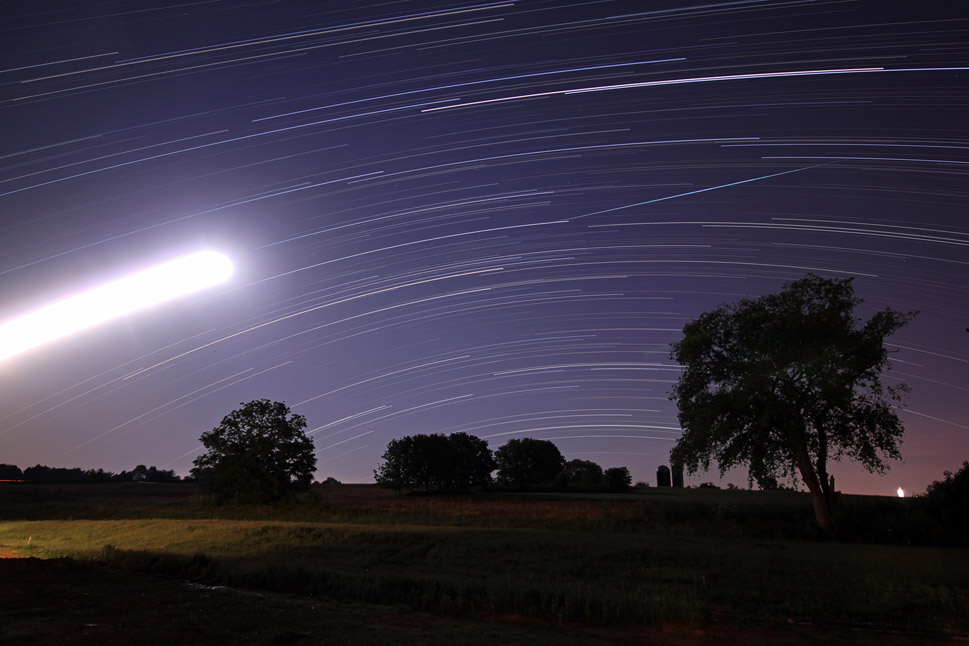June 7, 2013
Moon-Chased
image by Marion J. Haligowski
Looking like an errant star being chased by a brilliant monster, the meteor captured in Marion's skyview seems to be desperately trying to get away. Perhaps it is declaring its independence, for in the 18th century, following Newton's majestic discovery of the fundamental laws of motion, there was proud talk of a clockwork universe that humans could understand and predict. But in this image there is only one unpredictable object - the grain-sized rock that made the meteor. Having missed its chance to leave a permanent pit on the Moon, the mini-rock gave up everything in a brief sizzle through the atmosphere, a fiery end of 4.5 billion years of wandering.
Chuck Wood
Technical Details
"Flower Moon" on May 27, 2013 a day or so past full moon. A bright meteor along with an almost full "Flower Moon" are seen illuminating the Lancaster, PA countryside. The image was made of 415 twenty second exposures (about 2.5 hours). Each image was taken with a Canon T2i (f/5.0 with a Sigma 10-20 mm lens @ 14 mm / ISO 400) and stacked using StarStax.
COMMENTS?
Click on this icon File:PostIcon.jpg at the upper right to post a comment.




